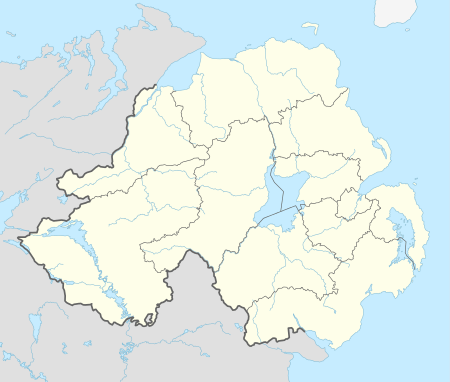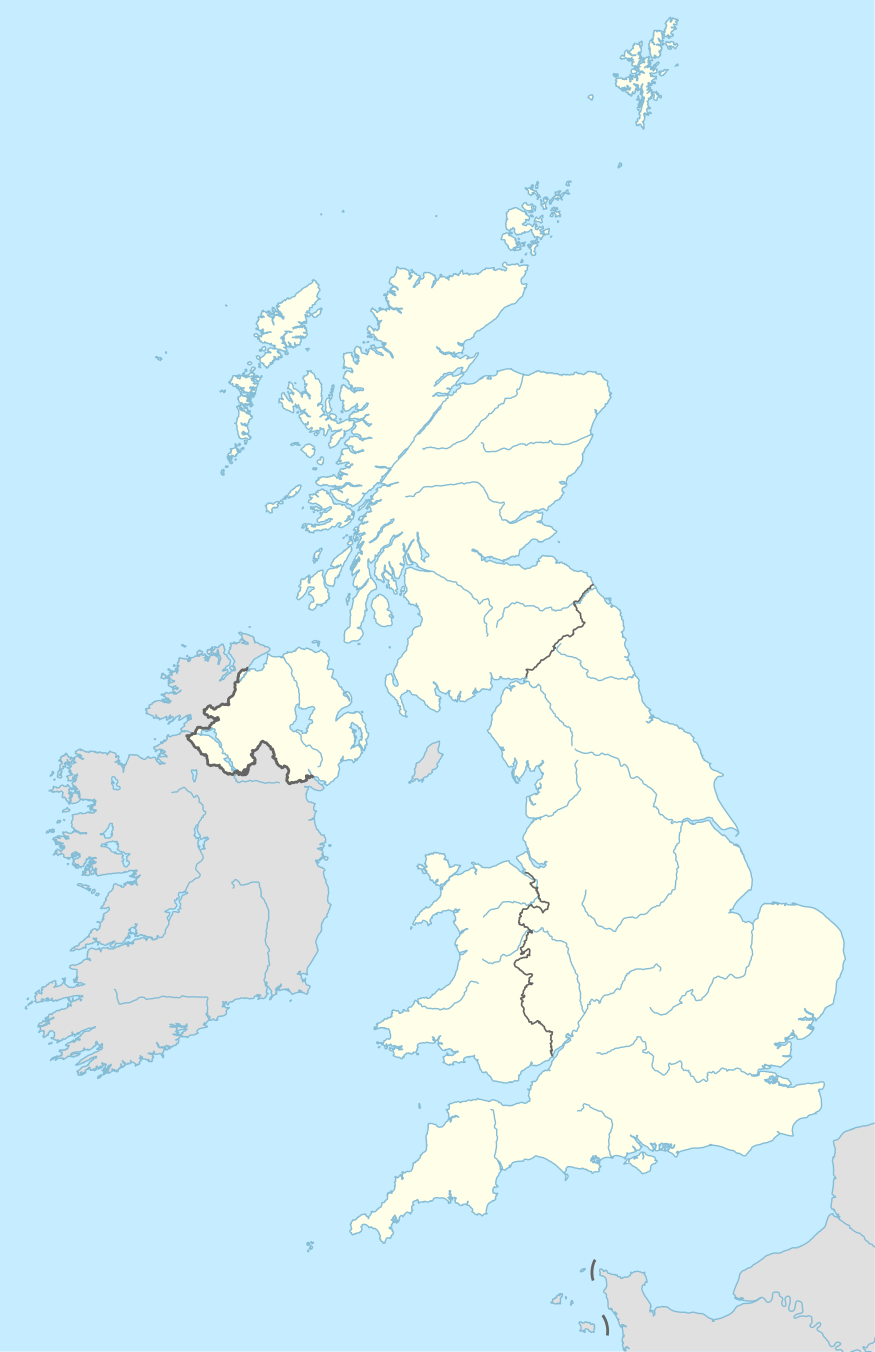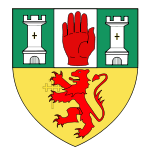White Abbey
Whiteabbey is a townland (of 406 acres) in Newtownabbey, Northern Ireland.[3] The shoreline village, spelt Whiteabbey, was established within the townland of Whiteabbey in the late 19th century. Today, it is a location within the borough of Newtownabbey. Whiteabbey is part of the civil parish of Carnmoney and the historic barony of Belfast Lower.[1][3]
Whiteabbey | |
|---|---|
 Terraced houses in Whiteabbey in 2007 | |
 Whiteabbey Whiteabbey shown within Northern Ireland  Whiteabbey Whiteabbey (the United Kingdom) | |
| Coordinates: 54°40′27″N 5°53′58″W | |
| Sovereign state | United Kingdom |
| Country | Northern Ireland |
| County | Antrim |
| Barony | Belfast Lower |
| Civil parish | Carnmoney |
| Plantation grant | Private plantation |
| First recorded | 1604[2] |
| Settlements | Newtownabbey |
| Government | |
| • Council | Newtownabbey |
| Area | |
| • Total | 370.79 acres (150.05 ha) |
History
Whiteabbey's name is derived from a Catholic Premonstratensian abbey which existed in the area in the Medieval period, the canons of the order wear white habits. All traces of the abbey are now gone although the site, in a field beside the grounds of Whiteabbey Hospital at Doagh Road, remains undeveloped. It can be viewed from the adjacent Abbots Cross Garden Village. The site of the Premonstratensian Abbey is designated as a Scheduled Historic Monument at grid ref: J3497 8198.[4]
In the first half of the 19th century, the village of Whiteabbey was home to a large bleach works and was an important landing site for coal shipments bound for Belfast. Remnants of the old pier can still be seen in Belfast Lough. The importance of Whiteabbey declined after the channel into Belfast Harbour was widened and straightened, allowing larger ships to reach the city directly.
Abbeylands, a two storey Victorian house in Whiteabbey, owned by Sir Hugh McCalmont,[5] was set on fire by Suffragettes in 1914 [6] causing £20,000 of damage.[7] Unionist leader, Edward Carson, had declared against votes for women, meanwhile his Ulster Volunteer Force (UVF) had been drilling troops at Abbeylands House. In protest the Suffragettes burnt the building to the ground on 27 March 1914, complaining that they were being imprisoned while the UVF were gun running and preparing for civil war.[8][9][10]
In 1952, one of Northern Ireland's most controversial murders took place in Whiteabbey when Patricia Curran, the 19-year-old daughter of prominent Judge Ulster Unionist politician Sir Lancelot Curran, was found stabbed near her home, Glen House.[11]
Whiteabbey, together with Whitewell, Whitehouse, Jordanstown, Monkstown, Carnmoney and Glengormley, were the seven villages that formed Newtownabbey when it gained district council status on 1 April 1958.
Local facilities
- Near Whiteabbey one can find a popular dog-walking route known as 'the Glen', which is a small forest area extending up to and beyond the Bleach Green railway viaducts. The Newtownabbey/Ulster Way passes through this area, as does the Threemilewater river.
- Whiteabbey Hospital is located near the village.
- Whiteabbey is close to the main shopping area of Newtownabbey, containing the Abbeycentre,[12] Abbey Business Park, Abbey Retail Park, Longwood Retail Park and Valley Retail Park.
- Whiteabbey also has its own train station allowing easy access to Belfast.
Local Schools and Education
- Northern Regional College
- Ulster University- Jordanstown Campus
- Whiteabbey Primary School - Whiteabbey Primary School has a long tradition of child centred learning. The original school opened in the grounds of Whiteabbey Presbyterian Church in 1863, moving to its present site on the Old Manse Road in 1939. There are currently 420 children in attendance at the school.
- St James's Primary School
- King's Park Primary School
- Rostulla Special School
- Thornfield House School
Local Churches
- Whiteabbey Congregational Church
- Whiteabbey Presbyterian Church
- Whiteabbey Methodist Church
- Saint James Catholic Church
- The Church of Jesus Christ of Latter-day Saints, Newtownabbey
Transport
The area is served by Whiteabbey railway station on the Belfast to Larne line. The station opened in April 1848.[13] Although it lies outside Belfast, the area is also served by the Translink Metro service.[14]
See also
References
- "Whiteabbey". Placenames Database of Ireland. Retrieved 12 April 2015.
- Place Names NI - White Abbey
- "White Abbey". IreAtlas Townlands Database. Retrieved 12 April 2015.
- "Whiteabbey" (PDF). Scheduled Historic Monuments (2015). Northern Ireland Environment Agency. Retrieved 21 April 2015.
- "Ulster Suffragettes". The Ulster Suffragettes. Archived from the original on 31 July 2013. Retrieved 16 April 2015.
- Bence-Jones, Mark (1988). A Guide to Irish County Houses. London: Constable. p. 1. ISBN 0 09 469990 9.
- "The Women's Suffrage Movement" (PDF). NI Assembly Education. Retrieved 16 April 2015.
- "The suffragette struggle in Ulster". Belfast News Letter. Retrieved 16 April 2015.
- "Prison, Protests and Hunger Strikes". Belfast Media Group. Retrieved 16 April 2015.
- "A role in Home Rule". Irish Times. Retrieved 16 April 2015.
- "Patricia Curran murder case".
- Abbey Centre
- "Whiteabbey station" (PDF). Railscot - Irish Railways. Retrieved 2007-08-28.
- Translink Metro 2
| Wikimedia Commons has media related to Whiteabbey. |
